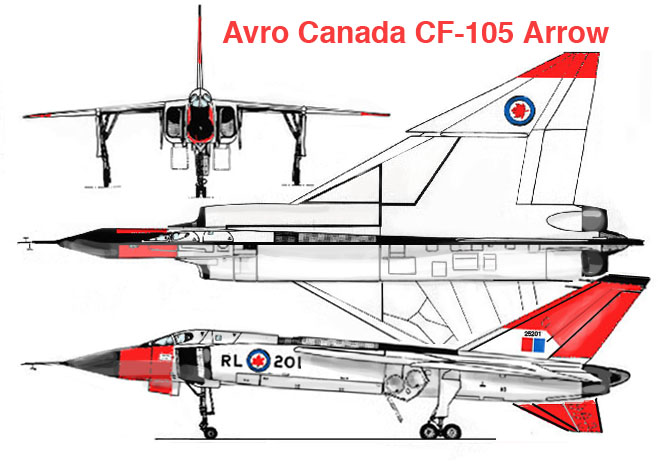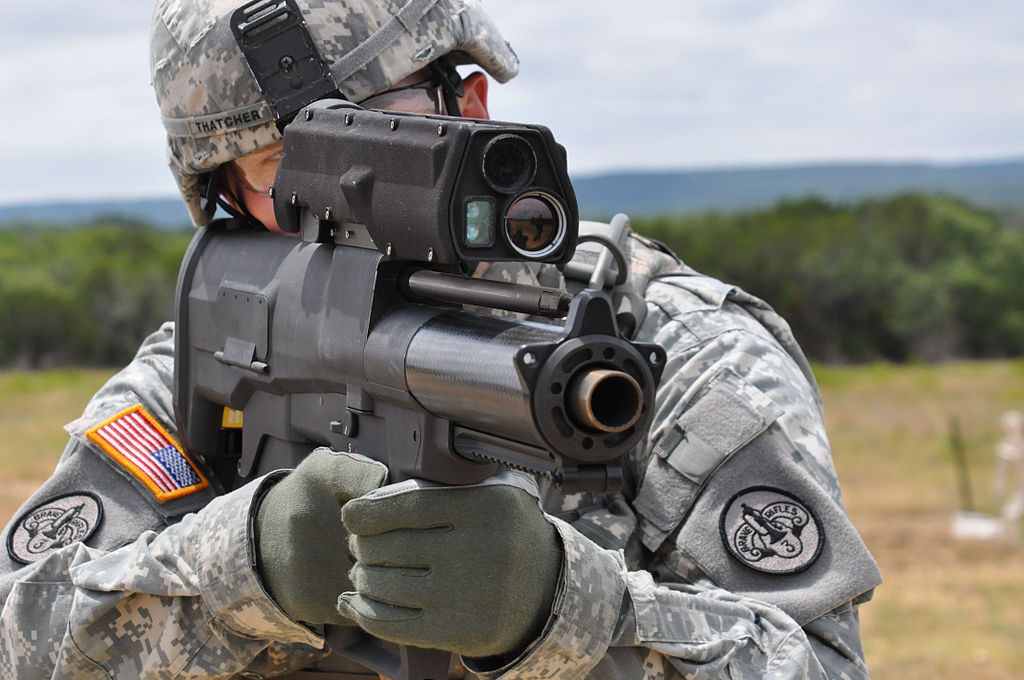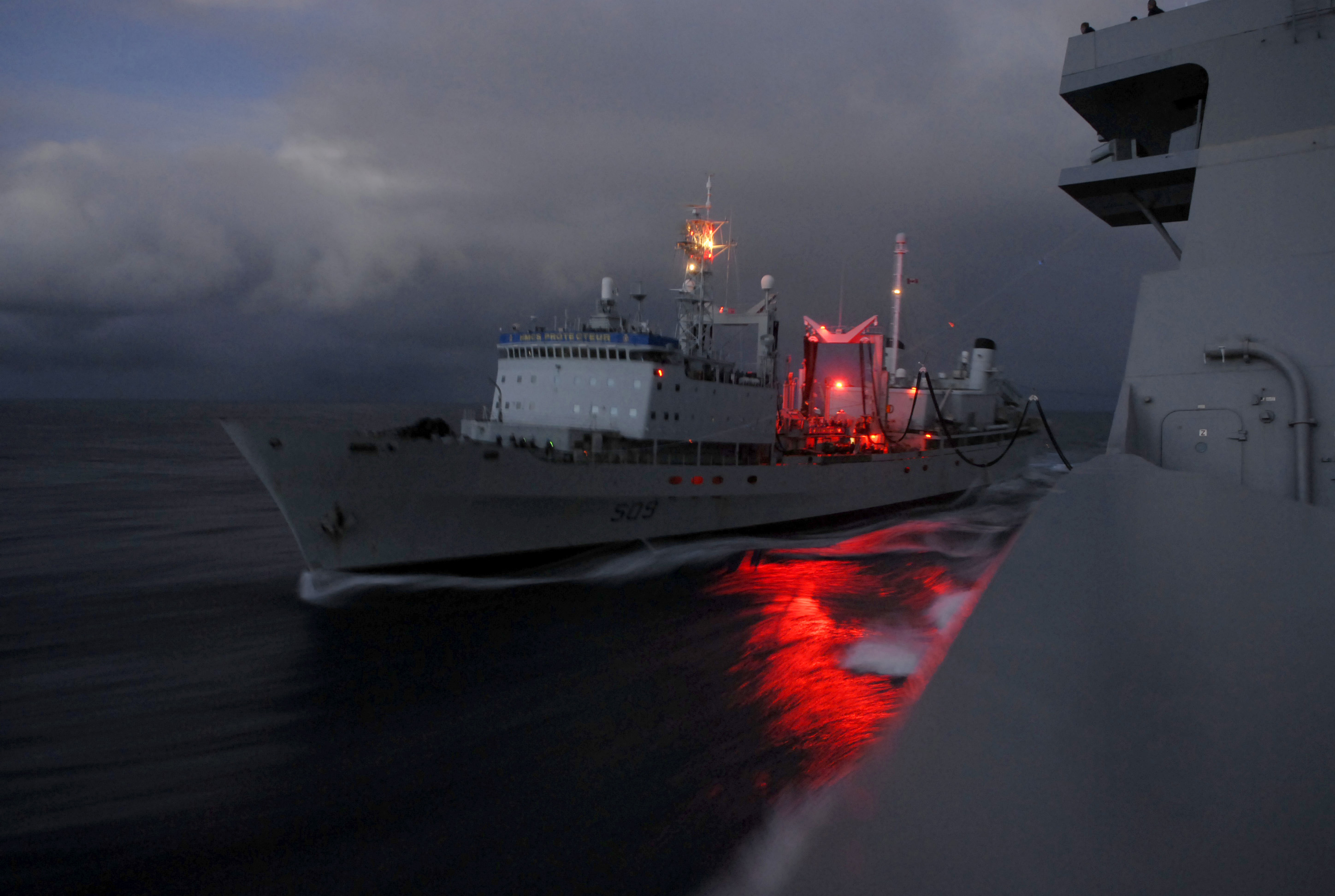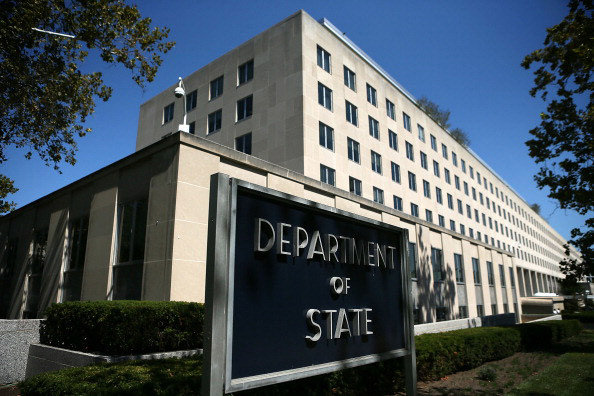Many Canadians know that the last flight of the CF-105 Avro Arrow was in 1959. Yet, to this day the aircraft continues to soar in the public’s imagination.
Built to meet North American needs, the Arrow never entered service, but had a short life as a developmental aircraft. The aircraft became famous more for the mystery and intrigue surrounding its cancellation, with only 66 flights totalling just over 70 flight hours. The decision to end the Arrow program is seen by many Canadians as a national betrayal, and the search for reasons and scapegoats goes on. This article will explore the story of the legendary Avro Arrow, arguing that the cancellation of this aircraft amounted to shutting down a national dream and selling out to American interests. The article will also assess the possibility of a re-imagined Avro Arrow, and how it would compete against other fighter aircraft currently in service.
What was theAvro Arrow?
The CF-105 Avro Arrow was a sophisticated example of technology more suited to today rather than the 1960s, and has been rightly referred to by the CBC as “the right stuff at the wrong time”. The Arrow’s development helped lay future groundwork towards the use of stealth, the deployment of weapons for stealth aircraft, and improvements in fly-by-wire controls.
The story of the Arrow starts with the RCAF’s desire for a supersonic fighter interceptor to counter the Soviet bomber threat during the early years of the Cold War. As such, the RCAF conceived Specification Air 7-3, which outlined what the RCAF wanted in the replacement aircraft for the Avro CF-100 Canuck fighters.
Specification Air 7-3 outlined the following: “The interceptor was to have a top speed of Mach 2.5, achieving an altitude of at least 50,000 feet, able to pull a minimum of 2Gs without loss of speed or altitude. The interceptor would have to function in arctic environments. It would have to carry an advanced weapon system and be a twin engined long range aircraft”.
At the time, these were the toughest requirements established for a military aircraft by any country. In fact, even today few military fighter jets meet the RCAF’s requirements for the Avro Arrow.
How good was the Avro Arrow?
The testing process of the Arrow was unique, starting from small scale models being wind tested and shot over Lake Ontario atop Nike Missiles to flight testing without the proposed Iroquois engine. Interestingly, during flight tests the Arrow came close to Mach 2 with the Pratt & Whitney J75 engines which weighed nearly twice as much as A.V. Roe Subsidiary Orenda’s Iroquois engines. Thus testing proved that the Arrow would easily meet most if not all of the RCAF’s requirements listed in Specification Air 7-3.
Based on this, A.V. Roe took the unusual approach of setting up an assembly line process for the production soon as approval was received. This process enabled the construction of 6 aircraft, of which the sixth (designated as RL 206) was to flight test the proposed Iroquois engine. Unfortunately RL 206 was never destined to fly, as the project was suddenly terminated on 20th of February 1959, just days before the scheduled flight test of RL 206. The 20th of February 1959, became immortalized as “Black Friday”, as the thousands of Canadians working on the Arrow project lost their jobs.
What led to the cancellation of the Arrow?
Early Doubts and Cost Overruns:
The Liberals under Louis St. Laurent had given the go ahead for the Arrow Program. Industries Minister C.D. Howe was tasked with overseeing the program. Interestingly to note, doubts about the program began to creep up even during the Liberal government, as costs mounted, accompanied with design and performance concerns that were raised, notably by the National Aeronautical Establishment (NAE) based in Ottawa. Heavy criticism developed from cost overruns as government budget officers often incorporated all project related costs including those of initial research and development. These doubts carried well into the subsequent Diefenbaker Conservative government.
Killing the National Dream:
Diefenbaker, coming from the Prairie farmlands, had little appreciation for technical projects and sought to cancel one of the Liberal major programs in order to find ways of giving more money to Saskatchewan farmers. The scepticisms pertaining to the Arrow program that arose during the Laurent era grew during the Diefenbaker era, despite early concessions regarding the weapon system for the Arrow.
Principle among these misgivings was the cost – according to government budget reports, Canada could only afford either the Arrow, or the Bomarc, not both. Furthermore, the Diefenbaker government noted that the cost per plane was more than American aircraft. Ironically, the company pleading to deaf ears noted that once development costs finished, new copies could be made significantly cheaper than American aircraft. These scepticisms combined with the frightening development of ballistic missiles in the Soviet Union in the late 50s, particularly the Sputnik launch, and Soviet espionage, helped bring about the end for the Arrow program.
The Sputnik launch had spread widespread fear that the Soviet Union could now attack the west with ballistic missiles, instead of bombers. As such, a number of Western officials naturally feared a missile gap, where NATO would potentially lose to the Soviet Union in an all out war. NATO countries sought to counter the Soviet missile threat by replacing manned interceptors with surface to air missiles, such as the American Sage Bomarc missile system. This shift was based on the assumption that manned interceptors would be unable to counter Soviet missiles. After the cancellation, the RCAF advised the NAE, which throughout had been a harsh critic of the program, that five aircraft and 14 engines were available for supersonic research. However, upon Government orders all aircraft were cut up and sold as scrap and all foreign contracts relating to the Iroquois engines were not to be honoured.
The Sell Out to US Interests:
At the behest of the US, the Diefenbaker government was forced to cancel the Arrow program, and take the more expensive 2nd hand Voodoos along with the Sage Bomarc system. In Palmiro Campagna’s Storms of Controversy, Campagna notes that “the money later spent on CF 101 Voodoos could have paid for at least the 37 Arrows already in development if not more”. The rationale cited by Diefenbaker was that the Americans were going to place Bomarcs below the Great Lakes if Canada did not take them, thereby putting major Canadian cities in the fallout zones of destroyed Soviet missiles that came over Canada, in the event of war.
American companies and government agencies such as NASA immediately following the cancellation hired the majority of the workers, resulting in history-making events, such as the Moon landings in the mid 1960s. Perhaps a more sinister reason for cancellation was the CIA’s belief that only the Arrow could kill the U2, and that through cancellation the U2 would remain unchallenged. As it turned out, the rationale of the U2 remaining unchallenged was short-lived, as the Soviets shot down Gary Power’s U2 in 1960.
Since the cancellation of the Arrow, Canada has invested billions of dollars procuring American aircraft that were poorer than the Arrow performance wise yet exponentially more expensive. Today, 30 years after the collapse of the Soviet Union, the RCAF is once again considering buying exorbitantly expensive American aircraft to replace its ageing CF-18 Hornets, owing to Canadian reliance on the US to help Canadian industries compete and survive across the globe.
The Viability of the Arrow:
One often hears that Canada just cannot do something and that it needs the US or other major powers to help its industries. Canada is wrongly considered a small country living in the shadow of one of the largest superpowers. In fact, Canada is a resource and technology powerhouse. Canada’s reason for wanting a defence industry was experience from WW2, when the country had few resources for coastal defence. The RCAF did not want to rely on foreign aircraft for their use. Using a similar argument, today, Israel, Pakistan, China, Brazil, Sweden, South Africa, Turkey and Italy all have aero industries. If it was possible, or indeed desirable, to rely completely on the USfor Canada’s defence, the death of the military program would be worthwhile. If, however, the US continues to go its own way, as it has in attacking Iraq, putting illegal tariffs on Canadian goods even with NAFTA in operation, or challenging Canada’s sovereignty over Arctic resources, Canadians may come to regret a failure to maintain and expand a home-grown defence industry.
A Re-imagined Arrow:
The aircraft would be both a single seat and a twin seat aircraft. The twin seat would primarily be for training purposes and long range reconnaissance missions. The aircraft would be made mostly of carbon fibre composite materials with aluminium leading edges. A re-designed version of the original proposed Iroquois engines made entirely out of titanium alloys, complete with trust vectoring systems and super cruising capabilities equivalent to the F-22 Raptor, would allow the aircraft to potentially reach top speeds in excess of Mach 3. The aircraft would possibly have a length of 16 m, a height of 4.95 m, a wingspan of 12.88 m in a delta configuration. Integral to the re-imagined Arrow would be the internal weapons bay, now a mainstay in all stealth aircraft. It could potentially be built as a joint venture between Canada and Turkey’s Turkish Aerospace Industries and Aselsan. Based on such specifications fused with the original RCAF specifications, a re-imagined Arrow would potentially be a fierce competitor of Boeing’s F-15 EX, Lockheed’s F-22 and F-35 and Airbus’s Eurofighter Typhoon. In a potential competition of lethality, survivability, ease of maintenance and multi mission capabilities, a re-imagined Arrow may top the podium, just like its predecessor would have back in 1959.
Conclusion:
Whatever someone’s opinion may be about the matter, it is generally agreed that the Arrow was a notable Canadian technical achievement. It could have been a superior aircraft, with speed, high altitude capability and state of the art controls. On the other hand, the Arrow was an unproven and costly aircraft. In the end there were no buyers for the Arrow, neither Canadian nor foreign. It became just another case of technology not finding a suitable commercial response. However, the case may be made for a re-imagined Arrow. If the Arrow back in 1959 was the “right stuff at the wrong time”, perhaps the right time has finally come.
Featured Image: Avro CF-105 Arrow 3 View (2011) by Buzk via Wikimedia Commons. Public Domain. https://commons.wikimedia.org/wiki/File:Avro_Arrow_3-view.jpg
Disclaimer: Any views or opinions expressed in articles are solely those of the authors and do not necessarily represent the views of the NATO Association of Canada.




